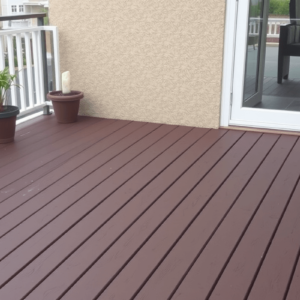“`html
The Future of Decking: WPC Co-Extrusion Technology
Introduction
In recent years, the construction industry has seen significant advancements in composite materials, particularly in the realm of Wood-Plastic Composite (WPC) decking. One such innovation is the WPC co-extrusion technology, which is revolutionizing the way we think about outdoor living spaces. This article delves into the technological advancements behind WPC co-extrusion decking, highlighting its improved color retention and enhanced structural integrity. By comparing it with traditional materials like wood and PVC, we aim to showcase the distinct advantages that this technology brings to the table.
Understanding WPC Co-Extrusion Technology
WPC co-extrusion technology involves the simultaneous extrusion of two or more layers of material, creating a single composite product with distinct properties in each layer. The outer layer typically consists of a high-performance polymer that provides superior UV resistance, wear resistance, and color retention. The inner layer comprises the WPC core, made from a blend of wood fibers and recycled plastic. This layered approach not only enhances the durability and longevity of the decking but also offers a more aesthetically pleasing finish.
Improved Color Retention
One of the most significant benefits of WPC co-extrusion technology is its ability to maintain color consistency over time. Traditional wooden decks often fade and become discolored due to prolonged exposure to sunlight, rain, and other environmental factors. In contrast, the outer layer of a WPC co-extruded deck is engineered to resist fading and maintain its original hue. This ensures that the deck retains its vibrant appearance for many years, requiring minimal maintenance and repainting.
Enhanced Structural Integrity
Another key advantage of WPC co-extrusion technology lies in its enhanced structural integrity. The inner layer of the composite core is reinforced with wood fibers, providing excellent strength and stiffness. When combined with the high-performance outer layer, the resulting deck offers superior load-bearing capacity and resistance to warping, cracking, and splitting. This makes WPC co-extruded decking an ideal choice for heavy traffic areas and regions with extreme weather conditions.
Comparison with Traditional Materials
To better understand the advantages of WPC co-extrusion technology, let’s compare it with traditional materials such as wood and PVC.
Wood vs. WPC Co-Extrusion
Wooden decks are popular for their natural aesthetic appeal and warmth. However, they require regular maintenance, including sealing and staining, to protect against moisture, rot, and insect damage. Over time, wood can warp, crack, and splinter, leading to costly repairs. In contrast, WPC co-extrusion decking is virtually maintenance-free, resistant to moisture, and does not require staining or sealing. It is also less susceptible to insect infestation and fungal growth, making it a more durable and long-lasting option.
PVC vs. WPC Co-Extrusion
PVC decking is another popular alternative to wood, known for its low maintenance and resistance to water damage. However, it can be prone to fading, yellowing, and scratching. WPC co-extrusion technology addresses these issues by providing an outer layer that is highly resistant to UV degradation, abrasion, and stains. This ensures that the deck maintains its appearance and functionality for a longer period.
Conclusion
As the demand for sustainable and low-maintenance building materials continues to grow, WPC co-extrusion technology stands out as a promising solution for modern decking applications. Its superior color retention, enhanced structural integrity, and resistance to environmental factors make it an attractive option for homeowners and commercial builders alike. While traditional materials like wood and PVC still have their place in the market, WPC co-extrusion decking offers a compelling combination of aesthetics, durability, and sustainability that sets it apart from the competition.
References
Advancements in Wood-Plastic Composites for Outdoor Applications
Structural Performance of Co-Extruded WPC Decking under Weathering Conditions
“`





Reviews
There are no reviews yet.